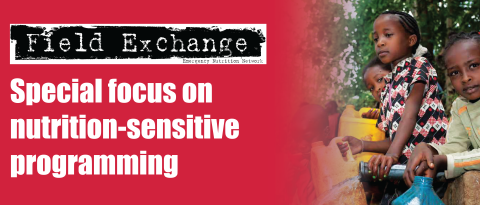IYCF-Friendly Framework pilot in Jordan, Bangladesh and Kenya
By Bushra Rashid, Nicki Connell and Caroline Wilkinson
Bushra Rashid is working as a Nutrition Advisor in the Humanitarian Surge Team of Save the Children UK. She has been involved in nutrition (IYCF, CMAM and BSFP) programmes in Asia, the Middle East and Africa during emergency responses.
Nicki Connell is a Humanitarian Nutrition Advisor working for Save the Children USA, who supports Save the Children operations at the global level. She is the lead on the IYCF-Friendly Framework project for Save the Children.
Caroline Wilkinson is the Senior Nutrition Officer working with UNHCR for the past seven years; previously she worked with ACF. In her role at UNHCR, she is the lead on the IYCF-Friendly Framework project.
This article acknowledges the contributions of Sura Alsamman, Dina Jardaneh and Ann Burton in Jordan, M. M. Taimur Hasan in Bangladesh, Mary Chelang’at Koech, Dorothy Gazarwa, Blessing Mureverwi and Anne Marie Defraye in Kenya, Ellen Cecilie Andresen in UNHCR Geneva, and all partners they work with for piloting the IYCF-Friendly Framework and their input in this article.
Location: Jordan, Bangladesh and Kenya
What we know: There is increasing interest in Infant and Young Child Feeding (IYCF)-sensitive activities involving multiple sectors, including in refugee settings. Whilst IYCF policy frameworks exist, comprehensive IYCF programming is often limited in scope and scale.
What this article adds: UNHCR and Save the Children are finalising an IYCF-Friendly Framework to guide multi-sectoral programming in refugee settings. It includes practical examples of IYCF integration into multi-sector programming and how IYCF support contributes to sectoral priorities. Pilots in refugee camps in Jordan, Bangladesh and Kenya have been successful; examples of progress include impact on labour law to facilitate breastfeeding (Jordan), IYCF referrals via child protection teams (Jordan), integration of IYCF messaging in food ration distribution (Bangladesh) and IYCF criteria used to target livelihood programmes (Kenya). Identification of sectoral IYCF champions has been a key driver. Lessons learned will inform the first version of the Framework, available early 2016.
Background
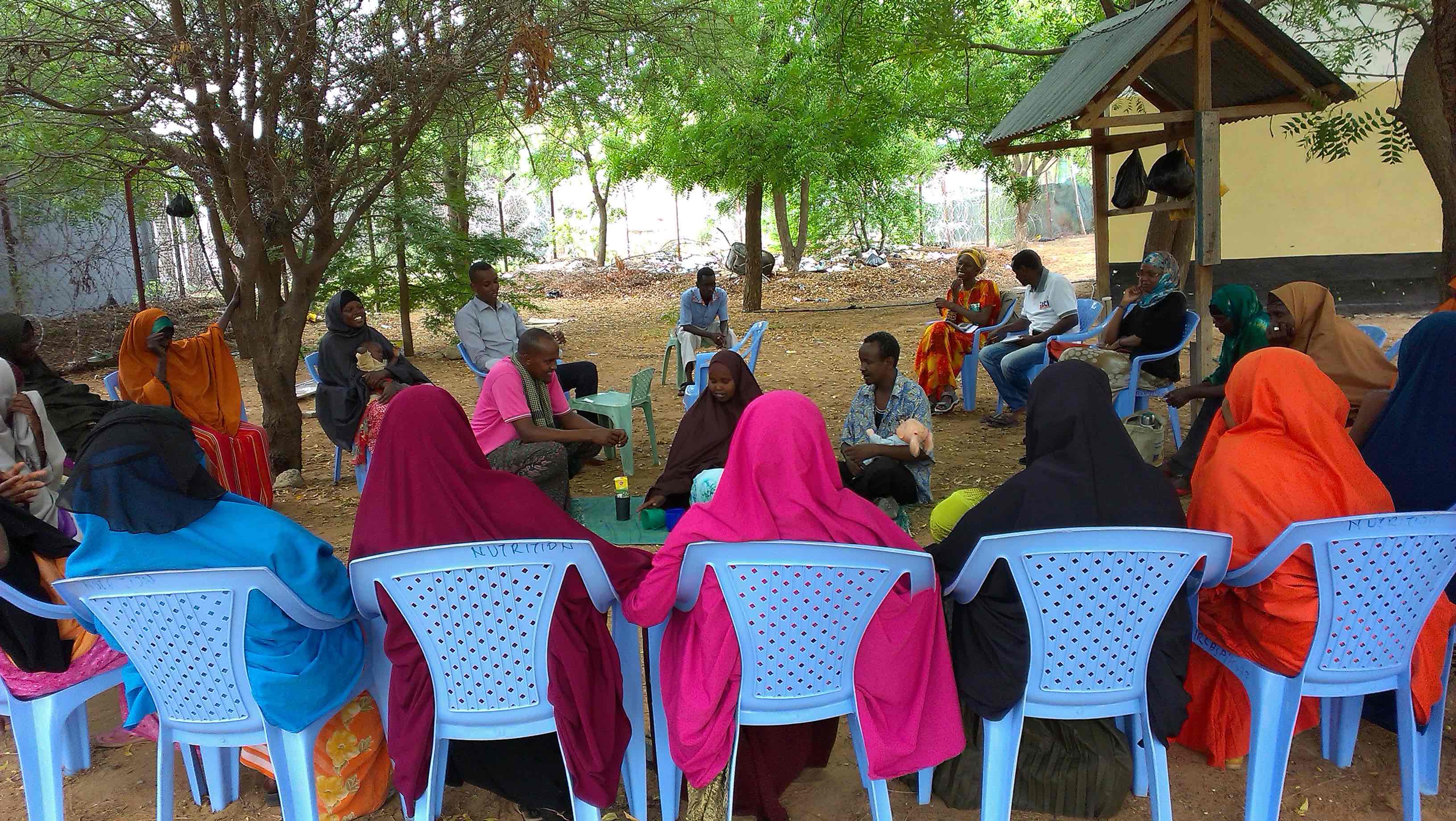 The Innocenti Declaration (UNICEF, 1990), the Baby-friendly Hospital Initiative (BFHI) (WHO, 1989) and The Lancet series of 2008 (Lancet, 2008) set a new pace of global action to support optimal IYCF. Progress in raising awareness and changing caregiver habits to ensure appropriate IYCF practices has expanded from focusing only on nutrition-specific interventions to promoting nutrition-sensitive activities that integrate IYCF into other sectors. Cross-sector engagement is essential to protect and meet the nutritional needs of infants and young children and their mothers adequately and in a timely manner (Sphere Project, 2011; IFE Core Group, 2007). Encouragement and protection of breastfeeding is an important part of the health, nutrition and other social measures required to promote healthy growth and development of infants and young children (WHO, 1981). The UNICEF conceptual framework for malnutrition shows that compromised water, sanitation and hygiene (WASH), education, food security, caring practices, health services, etc. contribute to child and maternal undernutrition, not just inadequate dietary intake and disease (UNICEF, 2003). The Lancet series of 2013 highlights the potential for nutrition-sensitive interventions to improve nutrition. Despite these recommendations, the overall profile of IYCF in humanitarian response to refugee situations remains limited. Although breastfeeding difficulties and requests for infant formula are two common issues in emergencies, IYCF programming remains a low priority for implementation. Approaches are not institutionalised or standardised among donors and hence vary greatly, and are often driven by the personal interest of key decision-makers in implementing agencies.
The Innocenti Declaration (UNICEF, 1990), the Baby-friendly Hospital Initiative (BFHI) (WHO, 1989) and The Lancet series of 2008 (Lancet, 2008) set a new pace of global action to support optimal IYCF. Progress in raising awareness and changing caregiver habits to ensure appropriate IYCF practices has expanded from focusing only on nutrition-specific interventions to promoting nutrition-sensitive activities that integrate IYCF into other sectors. Cross-sector engagement is essential to protect and meet the nutritional needs of infants and young children and their mothers adequately and in a timely manner (Sphere Project, 2011; IFE Core Group, 2007). Encouragement and protection of breastfeeding is an important part of the health, nutrition and other social measures required to promote healthy growth and development of infants and young children (WHO, 1981). The UNICEF conceptual framework for malnutrition shows that compromised water, sanitation and hygiene (WASH), education, food security, caring practices, health services, etc. contribute to child and maternal undernutrition, not just inadequate dietary intake and disease (UNICEF, 2003). The Lancet series of 2013 highlights the potential for nutrition-sensitive interventions to improve nutrition. Despite these recommendations, the overall profile of IYCF in humanitarian response to refugee situations remains limited. Although breastfeeding difficulties and requests for infant formula are two common issues in emergencies, IYCF programming remains a low priority for implementation. Approaches are not institutionalised or standardised among donors and hence vary greatly, and are often driven by the personal interest of key decision-makers in implementing agencies.
Considering this, UNHCR and Save the Children are in the final stages of developing an IYCF-Friendly Framework to guide IYCF programming in refugee settings. This Framework is designed as a tool to assist with implementing international policies, standards and guidance such as the Sphere Standards, the Operational Guidance on Infant Feeding in Emergencies, BFHI, and the International Code of Marketing of Breastmilk Substitutes (the Code). It operationalises their key provisions to facilitate IYCF support in different contexts, with particular attention to sectors that have not traditionally engaged with IYCF programming. The aim of the Framework is to:
- Take full advantage of all contact opportunities with infants and young children to improve their health, nutritional and developmental well-being;
- Provide simple IYCF tools to staff and partners to raise awareness and increase actions;
- Support development of concerted and harmonised IYCF messages and networks; and
- Wherever possible ensure that tools are based on or supported by existing materials.
This article shares the nutrition-sensitive components of the Framework and pilot experiences in three refugee camp settings.
Overview of IYCF-Friendly Framework
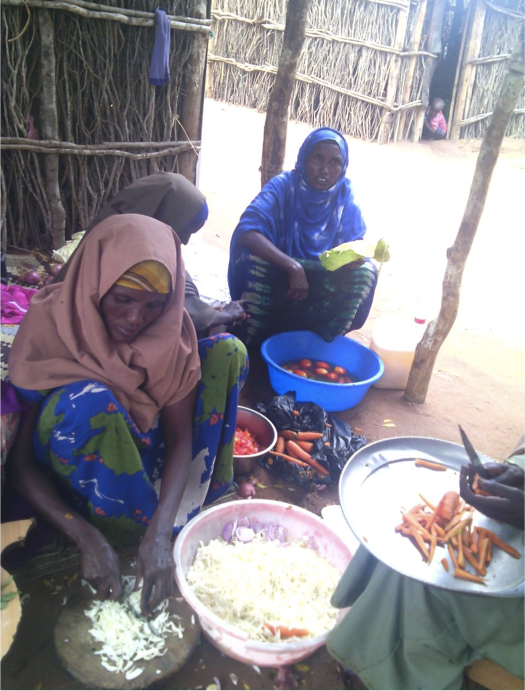 For an IYCF strategy to be implemented successfully, IYCF should be mainstreamed with all other relevant sectors operating in a given context. For inter-sector collaboration to be effective, all stakeholders should be sensitised to IYCF, even if they are not nutritionists or public health experts. Integration and coordination with other sectors are key enabling factors to ensure the success of IYCF programming and are two factors on which this IYCF-Friendly Framework is based. The Framework defines effective integration between two or more sectors when the sectors share common strategic objective(s) and activities that respect all sectors’ priorities, while contributing to a common goal. The common goal in this case is to protect infants and young children, enhancing their chances of survival and promoting healthy growth and development.
For an IYCF strategy to be implemented successfully, IYCF should be mainstreamed with all other relevant sectors operating in a given context. For inter-sector collaboration to be effective, all stakeholders should be sensitised to IYCF, even if they are not nutritionists or public health experts. Integration and coordination with other sectors are key enabling factors to ensure the success of IYCF programming and are two factors on which this IYCF-Friendly Framework is based. The Framework defines effective integration between two or more sectors when the sectors share common strategic objective(s) and activities that respect all sectors’ priorities, while contributing to a common goal. The common goal in this case is to protect infants and young children, enhancing their chances of survival and promoting healthy growth and development.
Structure and key features
The Framework includes a general overview and introduction, followed by sections (sector chapters) with examples of multi-sectoral integration. The core ‘Framework for Action’ section outlines seven actions with objectives and activities to create an enabling environment for IYCF integration with sectors (see Box 1). Practical examples of how IYCF can be built into multi-sector programming and contribute to the priorities of different sectors, cover child protection, education, food security and livelihoods (FSL), public health including mental health, reproductive health and HIV/AIDS, WASH, nutrition, and settlement and shelter (see Box 2 for some examples). These were developed in consultation with staff in relevant sectors within Save the Children and UNHCR. Snapshots of key information condense takeaway points from sectors. A clear and well-defined monitoring, evaluation, accountability and learning (MEAL) mechanism will be put in place to measure the impact of the Framework.
This Framework draws on short and longer-term refugee experiences, in camps in particular. However, its application is not limited to these contexts; many elements are applicable to non-camp settings, host communities, the internally displaced and urban and rural settings.
Box 1: The seven action points of the IYCF-Friendly Framework:
Action 1: Advocate for relevant stakeholders to consider IYCF.
Action 2: Mobilise resources for IYCF.
Action 3: Endorse key policies and adhere to operational standards.
Action 4: Select appropriate IYCF activities.
Action 5: Integrate IYCF with other sectors.
Action 6: Coordinate IYCF-sensitive activities.
Action 7: Implement monitoring, evaluation, accountability and learning.
Box 2: Examples of opportunities for integrated programming
Child Protection:
Extend community outreach by engaging members of existing community-based mechanisms to identify and refer children aged 0-23 months in need of case management and/or IYCF support.
Education:
Engage students through community-mobilisation opportunities and provision of key messages and information on IYCF through poems, drama, songs, stories and other methods; consider drama competitions related to IYCF.
FSL:
Coordinate in the design of rations and non-food items to ensure the needs of 0-23 month-olds and pregnant and lactating women (PLW) are considered and protected. For example, ensure rations include appropriate complementary foods for young children and sufficient food for at least one PLW; complement ration with fresh foods if necessary; and consider unintended consequences of food aid on feeding practices.
Public health:
Consider ways of incorporating IYCF indicators in the Health Information System (HIS) and UNHCR’s reporting system (TWINE) to collect, analyse and utilise information related to IYCF. Train IYCF staff on psychological first aid. Foster the establishment of mother-to-mother support groups through delivery/postnatal care services.
Nutrition:
Nutrition services (such as outpatient therapeutic programme, blanket or targeted supplementary feeding programmes) should include IYCF counselling where appropriate, or link to/collaborate with specialised IYCF services, providing for the specific needs of PLW, infants and young children.
WASH:
Provide hygiene promotion and related non-food items at Mother-Baby Friendly Spaces, to allow complementary nutrition education, particularly around IYCF and care practices.
Settlement and shelter:
Collaborate in planning discussions on minimising environmental and health risks in Mother-Baby Friendly Spaces related to food storage facilities, food preparation (ventilation, water access, etc.) and vector control.
More actions by sector are included in the Framework.
Process of development
 The IYCF-Friendly Framework has been developed through collaboration between UNHCR and Save the Children, from discussions and in-person consultations from UNHCR field teams, UNHCR partners, the Ministry of Health and global technical experts. This has guided and inspired decision making of high-level managers, coordinators, advisors and field staff based on practical experiences in multiple sectors. The Framework is a living document and was piloted in 2015 in the following refugee camps: Dadaab in Kenya; Cox’s Bazar in Bangladesh and Za’atari camp in Jordan.
The IYCF-Friendly Framework has been developed through collaboration between UNHCR and Save the Children, from discussions and in-person consultations from UNHCR field teams, UNHCR partners, the Ministry of Health and global technical experts. This has guided and inspired decision making of high-level managers, coordinators, advisors and field staff based on practical experiences in multiple sectors. The Framework is a living document and was piloted in 2015 in the following refugee camps: Dadaab in Kenya; Cox’s Bazar in Bangladesh and Za’atari camp in Jordan.
Pilot experiences
Za’atari camp, Jordan
In response to UNHCR Jordan’s initial encouragement to its partners in 2014, efforts to integrate IYCF with other sectors – education, child protection, health, WASH, FSL, camp management and shelter – started in Za’atari camp in Jordan Mafraq in March 2015. Before the Framework was introduced, strong IYCF programming and leadership (UNHCR and Save the Children were already in place (Alsamman, 2014). A Nutrition Working Group (NWG) was established in 2012; one of the sub-working groups in the health sector coordinating nutrition response in Jordan, chaired by Save the Children Jordan (SCJ) and UNICEF, attended monthly by partners working in nutrition in Jordan, and has developed Standard Operating Procedures (SOP) on management of breastmilk substitutes (BMS) and a guidance note on IYCF in emergencies. Regular reporting on BMS donations was in place. A system of individual-level feeding assessment and support is implemented for both breastfed and non-breastfed infants. All children under two in the camp are registered and there is a strong network of community mobilisers to identify feeding issues at household level. The Framework has made a difference on IYCF integrated programming in this ‘enabling environment’.
Advocacy with relevant stakeholders was among the initial steps towards integration of IYCF with other sectors. For this purpose, the NWG added ‘Inter-sectoral collaboration’ to its agenda to prioritise next steps for taking the IYCF-Friendly Framework efforts forward. An NWG member attended the Inter-sector Working Group (ISWG) and other sector meetings to generate interest and buy-in at different organisational staffing levels. The ISWG is the main bridge between the Sector Working Groups (Health, Food Security, Protection, Water and Sanitation, Shelter and Settlement, NFIs, Cash, Education). It meets monthly, with membership of the Sector chairs and representatives of the Jordan International NGO Forum. The ISWG also links the Sectors to the Country director-level refugee co-ordination body, the Inter-Agency Task Force (IATF). Individual meetings with sector chairs and separate presentations for the Framework for each sector were made. IYCF ‘champions’ – advocates of IYCF in sectors other than nutrition who constitute the backbone of IYCF advocacy – were identified during these meetings. At least one IYCF champion has been identified in the WASH, camp management and shelter sectors so far and recruitment of champions for the child protection, FSL, education and health sectors are planned. These IYCF champions will be briefed on their roles in taking the IYCF-Friendly Framework agenda forward in the sectors they represent.
The added value of the Framework has been to propel the endorsement of key IYCF policies in Za’atari camp in order to provide a conducive environment for promoting, protecting and supporting breastfeeding. Camp Management Committee (CMC) encouragement of the camp partners to follow the labour law of Jordan (which enabled enumeration for all lactating, working mothers having children less than one year to breastfeed for one hour each day during work hours) is a shining example of this effort. According to this law, mothers are able to take a break from their work to breastfeed their baby in peace. This gives them enough time to make a trip home to breastfeed and return to work. Adoption of this regulation throughout the camp has reduced breastmilk substitute (BMS) usage. If this regulation is not upheld by employers, it could lead a breastfeeding mother to request BMS from the health centre, triggering an alert and indicating the need for intervention.
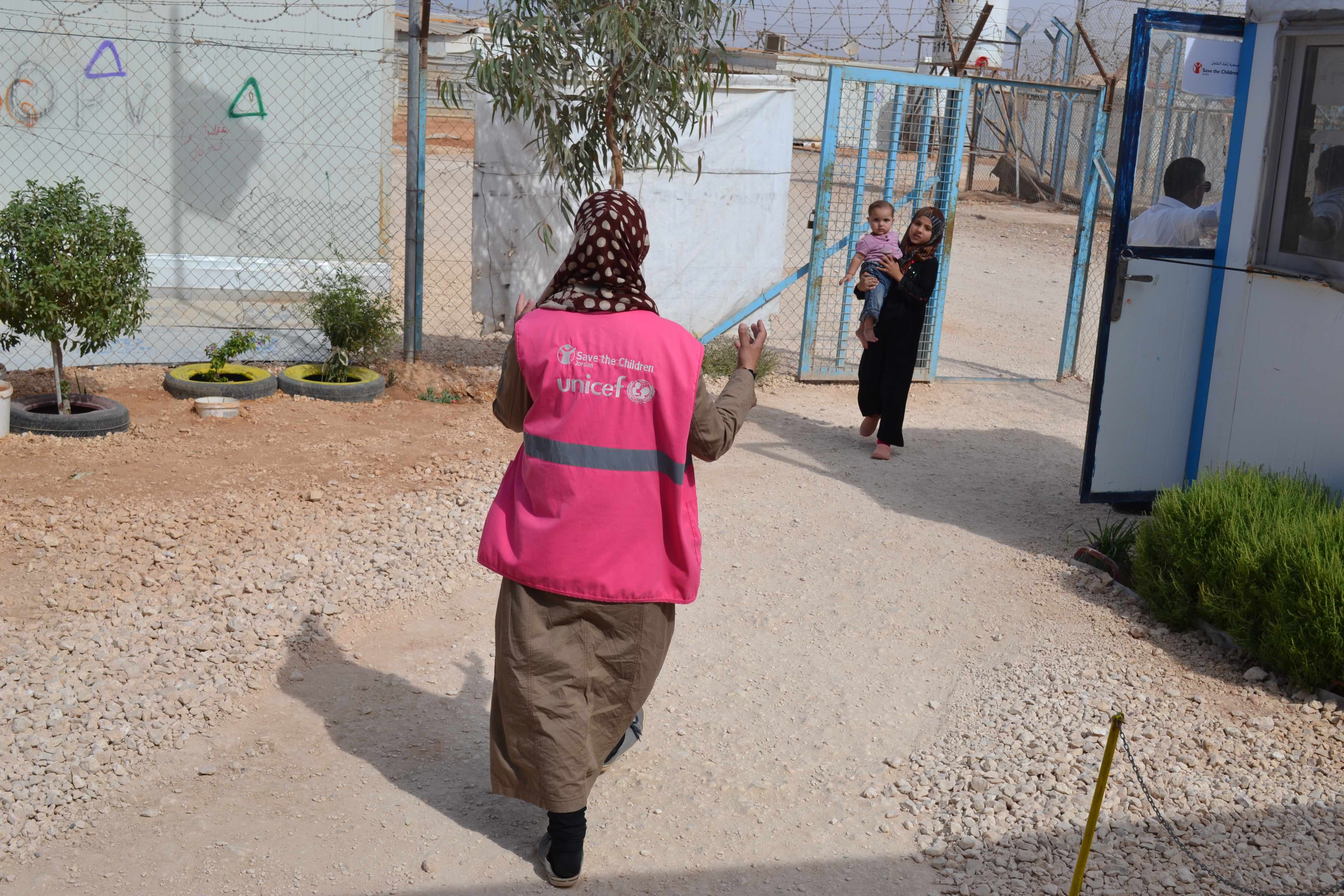 Similarly, the SOP for IYCF, which was developed by the NWG in 2012, was disseminated under the Framework’s initiative to sectors that had not yet been involved. This helped to formally flag the problems with untargeted distribution of BMS. Also, presenting the Framework to the CMC and SARD (police) led to the nomination of an IYCF champion from the SARD. Consequently, UNHCR and SCJ were able to advocate strongly for adherence to the SOP for the Handling of BMS in Refugee Situations (UNHCR, 2015). This led to removal of infant formula in camp shops; since infant formula is available on prescription based on individual level assessment, supplies are targeted and shop sales not permitted. The UNHCR SOP for handling BMS (2015) does not explicitly prohibit sale of BMS, but does specify the need for any supplies to be targeted to those who need infant formula, based on individual-level assessment. On this basis, general sale of BMS in the camps was stopped in the context of an alternative guaranteed supply and associated support being available.
Similarly, the SOP for IYCF, which was developed by the NWG in 2012, was disseminated under the Framework’s initiative to sectors that had not yet been involved. This helped to formally flag the problems with untargeted distribution of BMS. Also, presenting the Framework to the CMC and SARD (police) led to the nomination of an IYCF champion from the SARD. Consequently, UNHCR and SCJ were able to advocate strongly for adherence to the SOP for the Handling of BMS in Refugee Situations (UNHCR, 2015). This led to removal of infant formula in camp shops; since infant formula is available on prescription based on individual level assessment, supplies are targeted and shop sales not permitted. The UNHCR SOP for handling BMS (2015) does not explicitly prohibit sale of BMS, but does specify the need for any supplies to be targeted to those who need infant formula, based on individual-level assessment. On this basis, general sale of BMS in the camps was stopped in the context of an alternative guaranteed supply and associated support being available.
Inter-sectoral referrals have also been strengthened. Infants identified during house-to-house visits as needing child protection and WASH support are now referred by the IYCF team through formal referral procedures, which is an improvement to the past practice of more sporadic referrals. Thus the Framework has catalysed a formal mechanism for implementation. Other developments include strengthening of joint promotion sessions with education and WASH. Adolescent girls aged 14 to 18 years are targeted with IYCF sessions, including key messages on anaemia and nutrition during pregnancy, as well as family planning advice.
Amid the successes, the IYCF-Friendly Framework has also faced a few challenges and learned lessons. These include:
- Ensuring buy-in from other sectors to consider and incorporate IYCF in their sectors. A top-down rather than a bottom-up approach emerged as a possible way to ease integration efforts. This highlighted a need for advocating for the IYCF-Friendly Framework with the agency’s head first to help create favourable grounds for implementation and incorporation of activities at the field level with staff;
- Incorporating the recommendations from the Framework in active projects faced limitations. It is recommended that project proposals be reviewed through an “IYCF lens” or an “IYCF marker” similar to the “gender marker”, which would facilitate sensitivity to IYCF at the start of the project cycle and avoid the neglect of IYCF in project designs;
- Interest in IYCF advocacy varies in the related sectors and is personality-driven at the moment; agency endorsement needs to be at a global level to facilitate country office engagement;
- Enabling policies such as BMS code and BFHI are not fully implemented in Jordan;
- A lot of time is required and close follow-up is needed to monitor how activities are moving forward. Without that, progress will be much slower.
Pilot in Cox’s Bazaar, Bangladesh
Each year, UNHCR revisits the project agreements of all its partners in November to plan project activities for the coming 12 months. Since the IYCF-Friendly Framework was introduced in March 2015, UNHCR led partners in the incorporation of IYCF into existing activities where possible, but plans to work with partners towards the end of this year to incorporate the key actions of the Framework in 2016 through new programming. Currently, IYCF is integrated with some activities in the nutrition, health and FSL sectors, with IYCF staff supporting other sectors, as well as vice versa, including:
- Integration of IYCF key messages during ration distribution. The nutrition sector ensures that caregivers of children aged six-23 months receive key messages on IYCF during the bi-weekly distribution of micronutrient powders, weekly distribution of Wheat Soya Blend+ through blanket feeding, and monthly growth-monitoring visits. The nutrition volunteers and sector staff are trained on delivering key IYCF messages to sensitise the community on appropriate IYCF practices, e.g. to protect and promote breastfeeding and age-appropriate complementary feeding;
- Improving complementary food choices in the food voucher system. With around 17 food items to choose from, information on age-appropriate complementary feeding can encourage families to make appropriate food choices;
- Training of nutrition staff on identification and referral of caregivers under mental stress to the mental health unit during household-level screening and during follow-up of malnourished children; and
- Referrals by nutrition staff to the WASH sector volunteers when the hygienic conditions of a household are deemed compromised.
The pilot has demonstrated the need for dedicated staff to report and monitor multi-sectoral integration of IYCF. It has also found that IYCF-Friendly measures should be incorporated in the project design phase, so that all aspects of implementation can be satisfactorily considered before the implementation phase of the project cycle.
Pilot in Dadaab camp, Kenya
The third pilot was conducted in Dadaab camp, which has had considerable investment in IYCF support over a number of years, including piloting of the UNICEF IYCF counselling package and more recent activities by ACF to integrate maternal and IYCF nutrition across sectors (see ACF article in this edition of Field Exchange). Building on this groundwork, in May 2015, a Framework orientation of key staff from different agencies was conducted, which laid the foundation for further multi-sectoral integration of IYCF in Dadaab camp. The ACF Nutrition Manager assisted at the outset of the pilot with technical inputs into the IYCF champions’ training and was a key resource on key stakeholders, etc. ACF is no longer operating in Dadaab; agencies have cascaded this orientation in the form of training their staff on IYCF. Initially, the IYCF-Friendly Framework was integrated with the health and nutrition sectors, but is now slowly gaining momentum in integration with FSL and child protection sectors (discussed below) as a result of the orientation exercise.
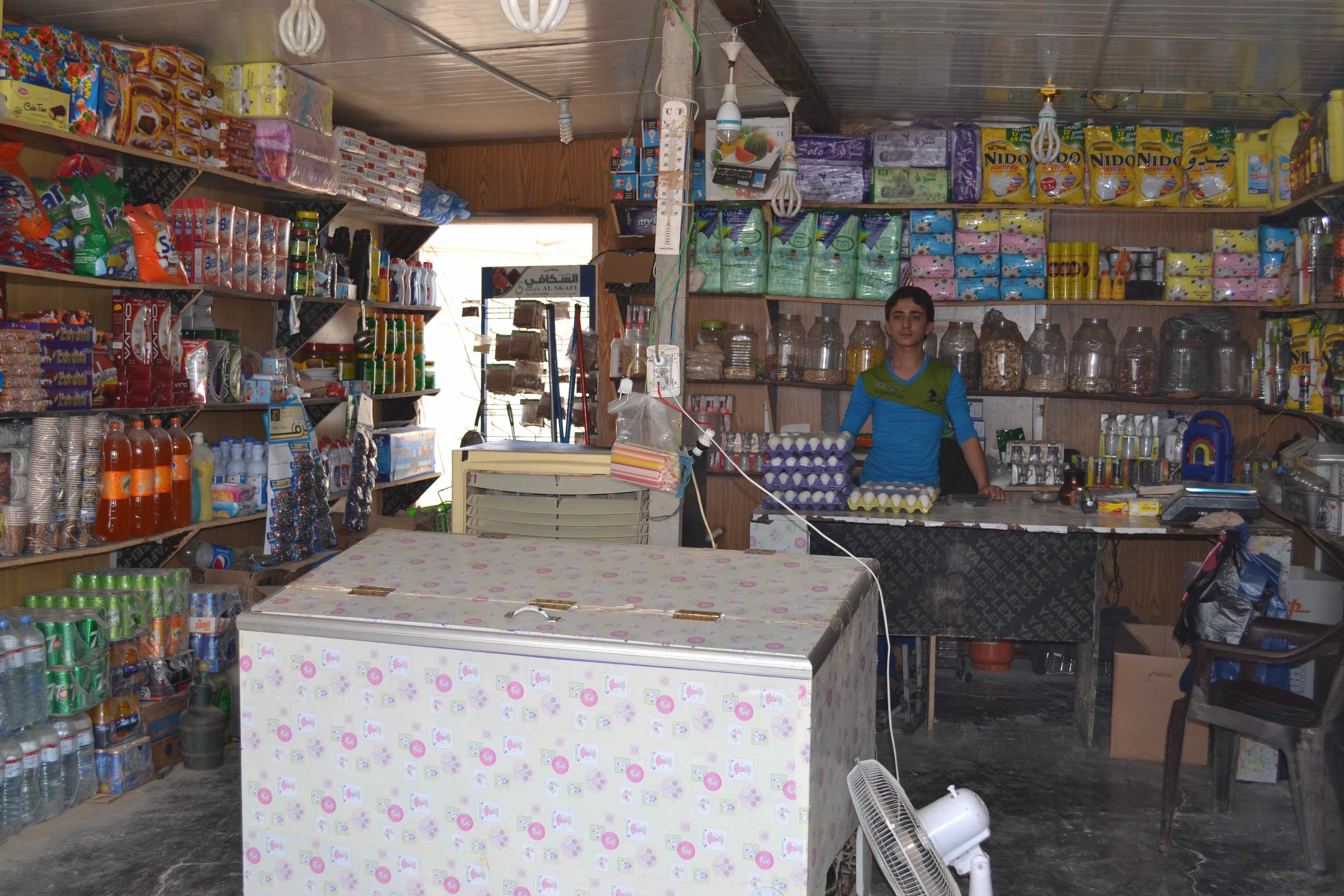 The Interagency Working Group, which meets once every two months to discuss programming concerns, has served as the platform to advocate to relevant stakeholders to incorporate IYCF and for carrying out discussions on the Framework. UNHCR spearheaded a coordination mechanism for IYCF by holding a coordination meeting in July 2015, which was followed by coordination meetings bi-monthly thereafter. UNHCR has identified an IYCF champion for each sector as the flag-bearer for IYCF in their respective technical sectors. They serve as a coordinating body between all sectors with IYCF, voluntarily attending agency meetings held every other month. Upon briefing on their role and orientation on IYCF, the champions feel empowered to carry out their set tasks without any handholding from a nutrition expert. At the same time, they know clearly who to approach if they have questions on IYCF or referrals to the IYCF programme. These IYCF champions are being appointed at manager, field staff and community levels to advocate for funding and integration across other sectors and to advocate effectively for optimal IYCF practices and referral mechanisms in the field.
The Interagency Working Group, which meets once every two months to discuss programming concerns, has served as the platform to advocate to relevant stakeholders to incorporate IYCF and for carrying out discussions on the Framework. UNHCR spearheaded a coordination mechanism for IYCF by holding a coordination meeting in July 2015, which was followed by coordination meetings bi-monthly thereafter. UNHCR has identified an IYCF champion for each sector as the flag-bearer for IYCF in their respective technical sectors. They serve as a coordinating body between all sectors with IYCF, voluntarily attending agency meetings held every other month. Upon briefing on their role and orientation on IYCF, the champions feel empowered to carry out their set tasks without any handholding from a nutrition expert. At the same time, they know clearly who to approach if they have questions on IYCF or referrals to the IYCF programme. These IYCF champions are being appointed at manager, field staff and community levels to advocate for funding and integration across other sectors and to advocate effectively for optimal IYCF practices and referral mechanisms in the field.
Some successful examples of implementation of the Framework include:
- IYCF-sensitive selection criteria for livelihood projects adopted by Lutheran World Foundation and Danish Refugee Council, according to which 140 mother-to-mother support group leaders (mentor mothers) from the IYCF programme have been selected to directly support other mothers in establishing kitchen gardens and diversifying the diets of children and the household. Also, IYCF messages have been integrated into the livelihood programmes;
- Strengthening of the referral pathways from protection sectors by Terres des Hommes, Danish Refugee Council and Save the Children International, ensuring timely and appropriate follow-up of abandoned/separated/orphaned infants in need of IYCF support and of newly registered infants aged 0-6 months. This has also ensured informed referrals for BMS for infants;
- Referral of caregivers of all newborns to mother-to-mother support groups in the community with follow up by the Mother, Infant and Young Child Nutrition (MIYCN) counsellor;
- There is now a functional BFHI committee in place to encourage integration of IYCF at hospital level. The committee comprises an agriculture nutrition co-coordinator, reproductive health coordinator, hospital matron, clinical services coordinator, three nurses, one medical doctor and a hospital nutritionist. The nutritionist and an MIYCN counsellor are stationed in the maternity unit, conducting IYCF counselling focusing on early initiation and exclusive breastfeeding.
During implementation of the Framework, a few challenges were faced. A gap in having a streamlined reporting mechanism was most evident. Without concrete reporting tools and mechanisms, the outputs and outcomes of the IYCF-Friendly activities being implemented cannot be recorded and thus no evidence for their value is generated (this tool is under development). Also, a gap in having dedicated staff to follow-up on the implementation of the Framework pilot was seen as another major challenge. Conversely, an important success of the Framework was that agencies realised that IYCF could be integrated into each sector through sometimes very simple actions. The previous labelling of IYCF as a health intervention limited its potential for implementation in other sectors.
During piloting of the IYCF-Friendly Framework, a general increased awareness of IYCF was achieved. While conducting meetings and encouraging participation and interest in IYCF was comparatively easy, the implementation and commitment by agencies to follow through on the action plans was not. Recurrent emergencies also shifted focus from planned activities and thus delayed progress. Another lesson learnt was the need to ensure application of the Framework in the project design phase.
Way forward
The pilot experiences have highlighted the next steps for each pilot country, while the lessons learnt during the adoption will inform the finalisation of the Framework itself by the end of 2015. Specific country actions include:
- The Jordan office will work on developing additional tools for reporting and monitoring referrals. Champions for all sectors will be appointed. The experience of piloting in Za’atari camp will be extended to Azraq camp;
- The Cox’s Bazar office in Bangladesh will incorporate specific activities outlined in the Framework for the next project cycle in 2016. A recently completed nutrition survey will help to identify critical IYCF-sensitive activities for improving IYCF outcomes in Cox’s Bazar;
- The Dadaab office in Kenya will work on strengthening reporting on IYCF indicators and inter-sector referral mechanisms.
The IYCF-Friendly Framework will be available in early 2016. Plans are in development for rollout in more UNHCR camp settings and ongoing experience capture to inform future iterations in a 2016-2018 programme of work.
For more information, contact: Nicki Connell.
References
Alsamman, S. (2014). Managing infant and young child feeding in refugee camps in Jordan. Field Exchange 48, November 2014. p85. Retrieved from www.ennonline.net/fex/48/managinginfant
IFE Core Group. (2007) Operational guidance for emergency relief staff and programme managers
The Lancet, (2008). Retrieved 30 Sept, 2015 from www.thelancet.com/series/maternal-and-child-undernutrition
The Lancet (2013). Retrieved 30 September, 2015 from www.thelancet.com/series/maternal-and-child-nutrition
The Sphere Project (2011)
UNHCR (2015). Infant and Young Child Feeding Practices. Standard Operating Procedures for the Handling of Breastmilk Substitutes (BMS) in Refugee Situations for children 0-23 months. Retrieved from www.ennonline.net/ourwork/guidance/sopbreastmilksubstitutes
UNICEF (1990). UNICEF. Innocenti Declaration on the Protection, Promotion and Support of Breastfeeding. New York, UNICEF, 1990
UNICEF (2003). Improving child nutrition.
WHO (1981). International Code of marketing of breastmilk substitutes, Geneva.
WHO (1989). Protecting, Promoting and Supporting Breastfeeding: A joint WHO/UNICEF Statement, Geneva.


